How to Add a New Dog into a Home with Another Dog

Introducing a New Dog into a Home with Other Dogs
Bringing a new dog into a home is always an exciting time. It's like adding a new family member or guest to the household. While much has been written on bringing puppies into the home - very little has been written about bringing new adult dogs into the home. This article should help you make some decisions that will ease the transition.
Pet owners often underestimate the kinds of problems that can occur if mistakes are made.
This can be a difficult, if not dangerous, situation if it's not handled correctly. You only need to go to Q&A section on my website and read the hundreds of emails I have on dog fights.
Many people think they can just bring a new dog home and let the dogs work things out themselves. For the lucky ones, this works out OK, but more often than not people find themselves in the middle of a dog fight and wonder what went wrong.
Dogs are pack animals and humans are primates. These two groups interact differently.
The average pet owner does not have a clue about how strong the genetic pack instinct is that floats just under the fur of their lovable family pet. The addition of a second or third dog into the home often triggers a genetic pack drive or RANK DRIVE. Many people are shocked and confused when they see the level of aggression that their sweet family dog is capable of.

There is usually more than one thing going on that result in these problems. To name just a few: a house dog is often territorial; there can be rank or dominance problem between the new dogs; or there can be inter-male or inter-female issues that result in aggression.
Yesterday, I had a lady write me who has a serious problem. She owned 30 house dogs. People like her are called "dog collectors." She takes in strays and if you can believe it, she keeps the majority of them in her home.
The woman realized that she has an obsessive-compulsive disorder.
As obvious as it is, this lady has created a huge dog pack and has witnessed some really awesome dog fights. The fact is the genetic instincts that control her 30 dog pack are the exact same instincts that start to flow in a home which only has 3 dogs.
Three Dogs Are a Pack
Here are some of the issues that develop when people create dog packs:
- Dogs become much more territorial (just like wolf packs).
- Three dogs will develop a RANKING ORDER which includes a pack leader. Every dog in a pack knows exactly what its rank is within their dog pack. When dogs don't have a strong human pack leader, one of the three dogs will ALWAYS step to the line and become the leader.
- When a new dog is added to a home, every dog in that house has to re-establish its personal rank within the new family pack. Re-establishing rank is where dog fights come from.
- By the way the worst dog fights are inter-female dog fights (females are fierce).
- When fights begin in a larger pack (3 or more dogs), most of the time, all the dogs will gang up on the weakest dog.
- Once a dog has been attacked, it is often traumatized for life. These dogs will always be leery of meeting new dogs. In fact, once a dog has been attacked it will often become dog aggressive and automatically want to fight any new dogs that it sees.
- A dog can love you and not respect you. Love and respect are two totally different things.
- Most dogs don't want to be the pack leaders. When it's forced on them they get stressed and nervous.
When dogs have strong human pack leaders this does not happen. The human pack leader makes it crystal clear that this aggressive behavior is unacceptable and will not be tolerated.
Human pack leader shows his dog or dogs that he will protect them FROM OTHER DOGS. This is a very important issue that the average dog owner doesn't realize, but I guarantee you, your dog does.

Our goal in introducing a new dog into a family that already has other dogs comes down to "bringing another member into the family pack in a manner that is seamless and nonviolent."
When it's done correctly, the first few weeks of your relationship with the new dog set the stage for the rest of your dog's life. The minute a dog meets you, they start to evaluate you as a leader. If you know this, it's easy to set yourself up as a pack leader. In my DVD titled Establishing Pack Structure with the Family Dog. I explain in detail how to do this.
My DVD lays out the steps I have used over the past 30-plus years when I bring new dogs into my home. With this said, I caution everyone about going too fast and skipping steps. You have nothing to lose in letting this process take some time and doing it right. With this said, you have a lot to lose if you screw up and end up with a dog fight.
The most important part of this process is to get and use dog crates. We have a dog crate for every dog in our house. Just because your current dogs don't use crates is not a good enough reason to not use them in this process.
We put the new dog in a dog crate in our home, where the other dogs can go up and smell the newcomer. If our house dogs growl at the new dog, we immediately step right in and give a strong correction.
Your job as THE PACK LEADER IS TO SHOW YOUR DOGS THAT YOU WILL NOT TOLERATE AGGRESSION TOWARD THIS NEW PACK MEMBER.
Pack leaders decide when there will be a fight and by you stopping aggression, you are reminding them who the leader is. If you want to learn about corrections, you can read the article I wrote titled The Theory of Corrections in Dog Training.
We put prong collars or remote collars or dominant dog collars on our house dogs when we have determined it's time to allow the dog out of the crate in the house. The new dog always has a leash on in the house. This does not come off until the dog is obedience trained to the point where we are 100% sure that we can call him away from a serious distraction (IE a house guest, food, a toy or away from the crate where the other dog is).
If the new dog growls at us or the other dog during this process, we either put him back in the crate (and the crate training begins again) or we have the tools in place to give an appropriate correction.
If you have a rank problem between you and your dog then you are going to have to deal with that before you introduce this new dog. If need be you may want to get my DVD Dealing with Dominant & Aggressive Dogs.
There is no reason to rush the introduction of a new dog into your home. It can take weeks or even months for that matter. We have 4 house dogs. We have 4 crates in our basement one in my office and one on the main floor of the house. While our dogs can be together when we are present, we never leave them together when we are gone. In fact, we only leave one dog out of the crate when we are gone.
During the day, we rotate our dogs through the house, through their dog crates and through the outside dog yard.
During the period that you are introducing an adult dog into your home, you will have times when your existing dogs are in their crates and the new dog is on a leash in the house. This is the time that you establish your relationship with this new dog. This is done through grooming, walks, play, and obedience training and pack structure training.
Establishing a relationship means that you are subtly teaching the dog that you are the pack leader. This is accomplished by controlling every aspect of this dog's life. I have written extensively on this process and covered it in both the pack structure and dominant dog DVD.
Even if you don't have a dominant dog, you should still read the article I wrote titled Dealing with the Dominant Dog.
I also recommend the article I wrote titled The Ground Work to Becoming a Pack Leader. This is part of the protocol we use in our home to introduce new dogs and puppies.
Now Back to Introducing the Dogs
During the first weeks, the only time our dogs are around one another is when one is in a crate and the others are loose. We know when they are beginning to accept one another when they begin to ignore one another. Your goal here is to show the existing house dogs that this new dog is now part of your pack.
Once that happens, you can start to think about how to introduce the dogs outside of the crates.
We always handle introductions with both dogs on leash with a dominant dog collar. It's best not to do this inside the house.
I would like to make the point here that for this work I prefer a dominant dog collar over a prong collar. Many times a prong collar correction can overstimulate a dog and result in redirected aggression. This means a stressed dog attacking either the handler or the other dog.
I explain it to new handlers like this - a prong can put more drive into a dog and a dominant dog collar takes drive out of a dog. During the introduction we want to take drive out of a dog.
We handle the introduction by taking the dogs for walks together. If there is even the slightest possibility of a fight we will muzzle the dogs (more on that later).
The bottom line is to error on the side of caution and safety. Dogs use their body language to communicate so take a little time and learn a little bit about dogs body language.
- Is a dog standing stiff legged, tail held high? This is a sign that the dog is either dominant or assertive. This could be a dog that is going to pounce or explode on the other dog.
- Does the dog hang back behind you? Not wanting to make contact? This is a sign that the dog is looking at you for protection from a nervous situation (dogs always look to their pack leader for protection) If you push this point here and try and force contact you may put the dog in "FIGHT OR FLIGHT" and end up with a dog fight.
- Does the dog wag his tail and down down in the front when you bring the other dog out. This is an invitation to play and a good sign.
- Does the dog look relaxes with a gentle tail wag. This is not a dog that is stressed. So things may proceed OK on the walk.
Your first walks should be away from your home and the route you take should not be the normal route you have walked your house dogs for the past 3 years. They consider that route their personal territory and you run the risk of territorial aggression.
During the introductory walks always keep the leash loose. If the dogs pull they need a firm POP correction. A tight leash can causes frustration in the dogs and this could trigger re-directed aggression.
DO NOT GO TO DOG PARKS!! - Dog parks are a perfect place to find yourself in a dog fight. I wrote an article on why dog parks are a bad idea. I suggest that you read it.
If things go well on these walks then that's great, but again there is no hurry. You have the rest of your dogs' lives to get things settled. One mistake at this stage could lead to a fight from which some dogs never mentally recover.
When the walks have gone well we will introduce them on either side of a chain link fence. The leash is dropped and dragging on the ground. One dog goes inside the yard by itself and the second dog is on a leash outside the yard.
They can sniff through the fence like they did through the dog crate, but here they feel less restricted. They certainly cannot get into a real fight. I demonstrate this process in my online course - Dealing with a Dominant Dog.
That course has excellent examples of dogs being aggressive through fences. The course also demonstrates when a smaller woman needs to consider a remote collar to be able to handle a large dog.
By the way, it is critical that you get a ID NAME TAG for your new dog as soon as you get the dog. If by chance the dog would get away from you and not come when called, you would have a way for people to identify you as the owner when the catch him. With this said - we would never leave a new dog alone in a fenced back yard. That's a terrible idea and a perfect way to lose your new dog.
When the walks and fence are going well, there comes a time to allow your dogs to meet face to face when you are not holding the leashes. Allow them to sniff one another. Talk to them in a firm, commanding, neutral voice.
Keep the meeting short. Then take them for a walk together. If there is any growling they always get a VERY STRONG VERBAL NO!!
Be prepared to use the dominant dog collar the way it is intended to be used (lift the dogs front feet off the ground by the leash). When dog fights begin they are often right out of the blue and lighting fast.
In extreme cases where you are not sure of what may happen, both dogs should have a muzzle on. We offer inexpensive plastic Jafco muzzles which work just fine. We also offer excellent wire basket muzzles. That way if there is a fight the dogs will not get injured and you can step in and break the fight up without getting bitten.
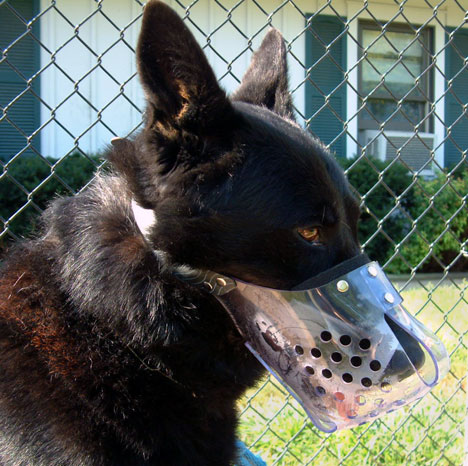
If you screw up and a dog fight starts - NEVER STEP IN AND TRY TO BREAK UP THE FIGHT by grabbing both collars. Not unless you want a quick trip to the emergency room. There is a protocol to follow in breaking up dog fights. I have written an excellent article on how to do this.
DOG FIGHTS are very dangerous events. Read that article. But with that said, know your physical limitations and always err on the side of safety.
When I introduce 2 adult dogs, I will allow sniffing but no dominant posturing – it's called "T-ing" off. In other words, the dominant dog will put its head over the top shoulder of the other dog and press down.
When the meetings in the back yard are working, then you can try allowing the dogs to be loose together in your home.
We make them wear a drag line and we keep complete control. In other words, we don't allow them to run around like crazy dogs. We make them all do a “down stay” so they are looking and listening to US and not thinking about being stupid with one another.
Food and Toys
One of the most common causes of dog fights in the home are fights over food and toys.
We feed the dogs in dog crates or in different rooms. Pick up any uneaten food after 15 minutes. You will be surprised at how fast your dog will clean his food bowl when he understands that you always take the food away after 15 minutes.
Never allow the dogs to be together with toys. Toys are triggers for dog fights. So NO TOYS left laying around!! Dogs need to learn that all of the toys are your toys and you occasionally allow your dog to play with YOUR TOYS but you always take them back after play time. We sell some great dog toys on our web site - we only sell toys that we use with our dogs and we want toys that are going to last. Check them out.
House Rules
When you get a new dog is is always a good idea to sit down with family members and make a written list of your house rules.
Everyone in the family needs to agree to follow these rules. Consistency is the most important part of dog training. If one family member chooses to ignore the family rules the entire process can break down.
Here are some sample rules:
- Determine who will feed the dog - when and where?
- Determine who will exercise the dog - where when and what kind?
- Determine who will be the primary trainer (even though others may handle the dog during and after training there should only be one trainer) This is covered in my Basic Dog Obedience DVD.
- Who does the house training
- What are the rules on furniture? I.E. only up if invited up and not on the beds
It becomes very clear who is the pack leader (ME!!)
Again, if there are questions use a muzzle.
Never allow dogs on the furniture or on your bed. That's just asking for dominance problems. You will have enough pack juices flowing without allowing things to happen that increase rank issues.
In the DVD I did titled Remote Collar Training for the Pet Owner, I show how to teach a dog to ignore other dogs by using a remote collar.
Do not attempt to use a remote collar for dog aggression unless you have studied the information in that DVD. If you do it wrong you will instigate a dog fight that you may not be able to deal with.
Keep one last thing in mind. There are some dogs that no matter what you do they will never reliably accept another dog. Keep an open mind about this. If you like both dogs and are not willing to re-home one of them then you simply use two dog crates and keep them separated. Frankly it's not that big of a deal.
What blows my mind are the people who write and tell me they are going to kill one of their dogs because they can't stop the fighting. That's crazy. Just keep them separated.
Also those people who will tell you to just put the dogs together and let them work it out are people who are drop dead stupid. They have not seen the damage from a serious fight. You can tell them to go look at the dog bite pictures on this web site.
Dog Parks
With all of this said you can see why I am not a fan of the "DOG PARKS" I have even written an article on why dog parks are a bad idea.
I caution people not to bring their dogs to these places. It is not a matter of if your dog will be attacked; it's only a matter of when will it happen.
It's survival of the fittest in dog parks.
The same can be said for some doggy day care places.
If they use crates and introduce dogs slowly then it's a well run establishment. If they just toss dogs in a big room and stand back and watch, then don't do business with them.
In closing, I want to make the point that just because you made mistakes in how you introduced your dogs does not mean that you cannot start from scratch again. It may work, it may not work. There is nothing lost in trying.
Muzzles
In extreme cases where you are not sure of what may happen, both dogs should have a muzzle on. We offer inexpensive plastic Jafco muzzles which work just fine. We also offer excellent wire basket muzzles. That way if there is a fight the dogs will not get injured and you can step in and break up the fight.
Dogs on Furniture
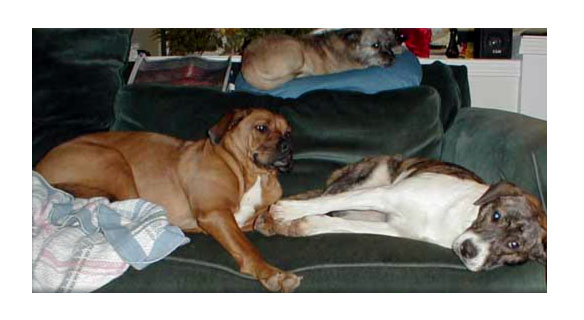
This photo represents a huge problem. Allowing dogs to lie on furniture is only asking for dog fights and dominance issues. In this case these dogs almost killed the little dog on the back of the couch before the owner made the necessary changes to stop the dog fights he was having.
More About Dog Aggression
If you have come to this page more than likely you have issues with aggressive dogs. A number of pages on my web site (including this one) contain emails about dog fights. I have placed my personal comments under many of these emails.
In addition we offer training resources. I have produced DVD titled: Dealing with Dominant & Aggressive Dogs. This DVD demonstrates how to break up a dog fight if you are alone.
Dog fights are violent, loud, and dangerous events. I get emails every day on dog fights. As I wrote this description I got 2 emails. In one email the family had two dogs. Their female GSD had just killed their Dachshund. In the second email this family's dog had just been in a fight with a neighbor's dog and did $1,400 damage.
In the mid 1990's I wrote an article on How to Break Up A Dog Fight. I recommend this article especially if you have multiple dogs.





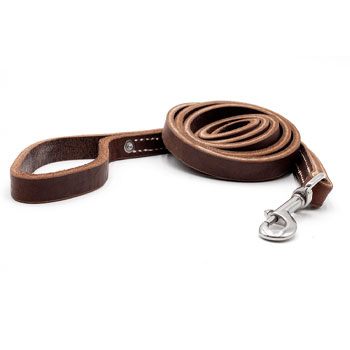
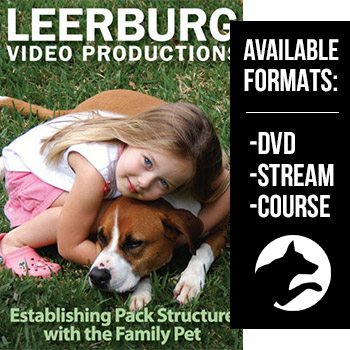
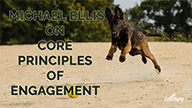
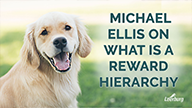
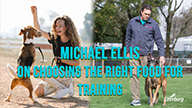
Ask Cindy.